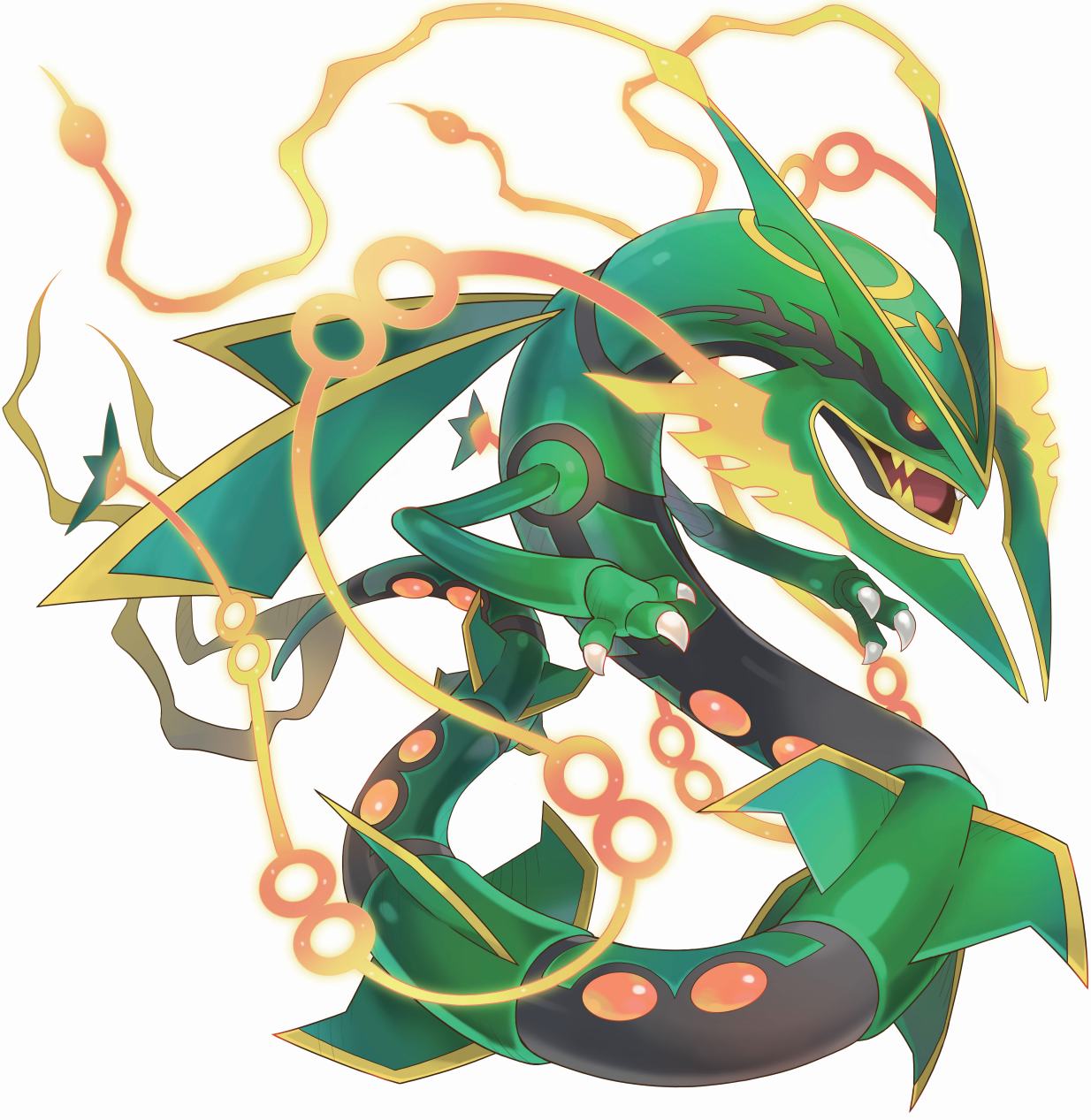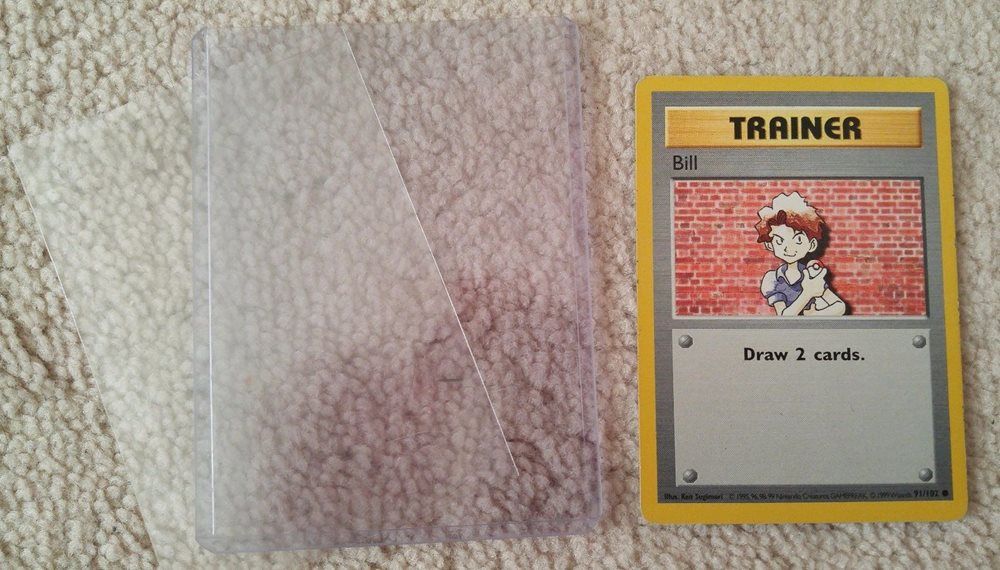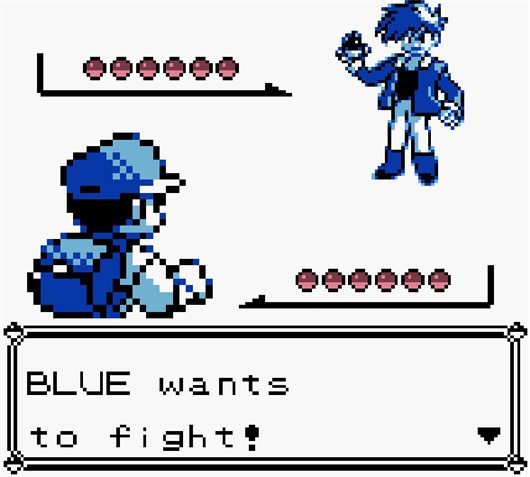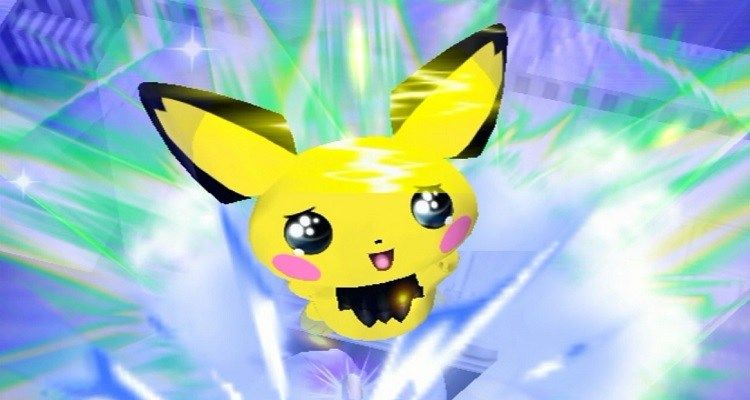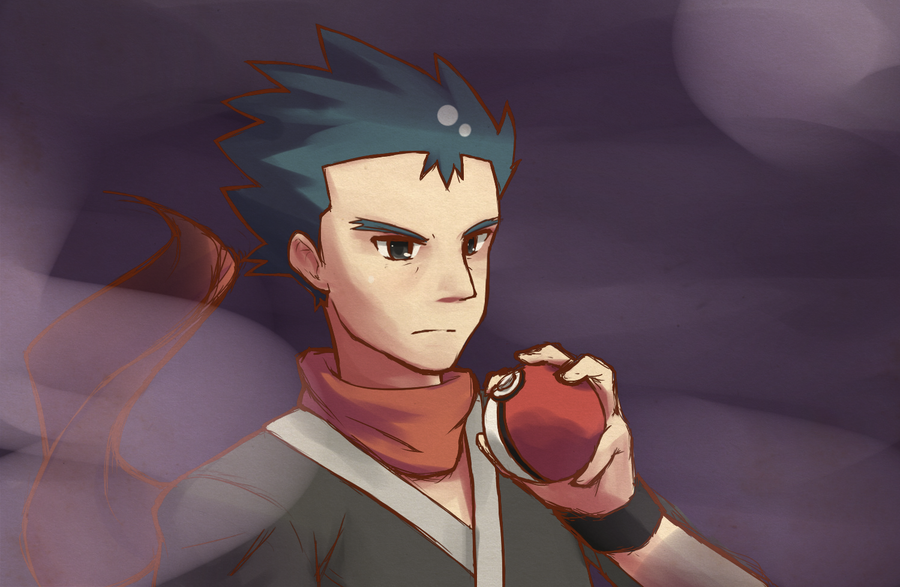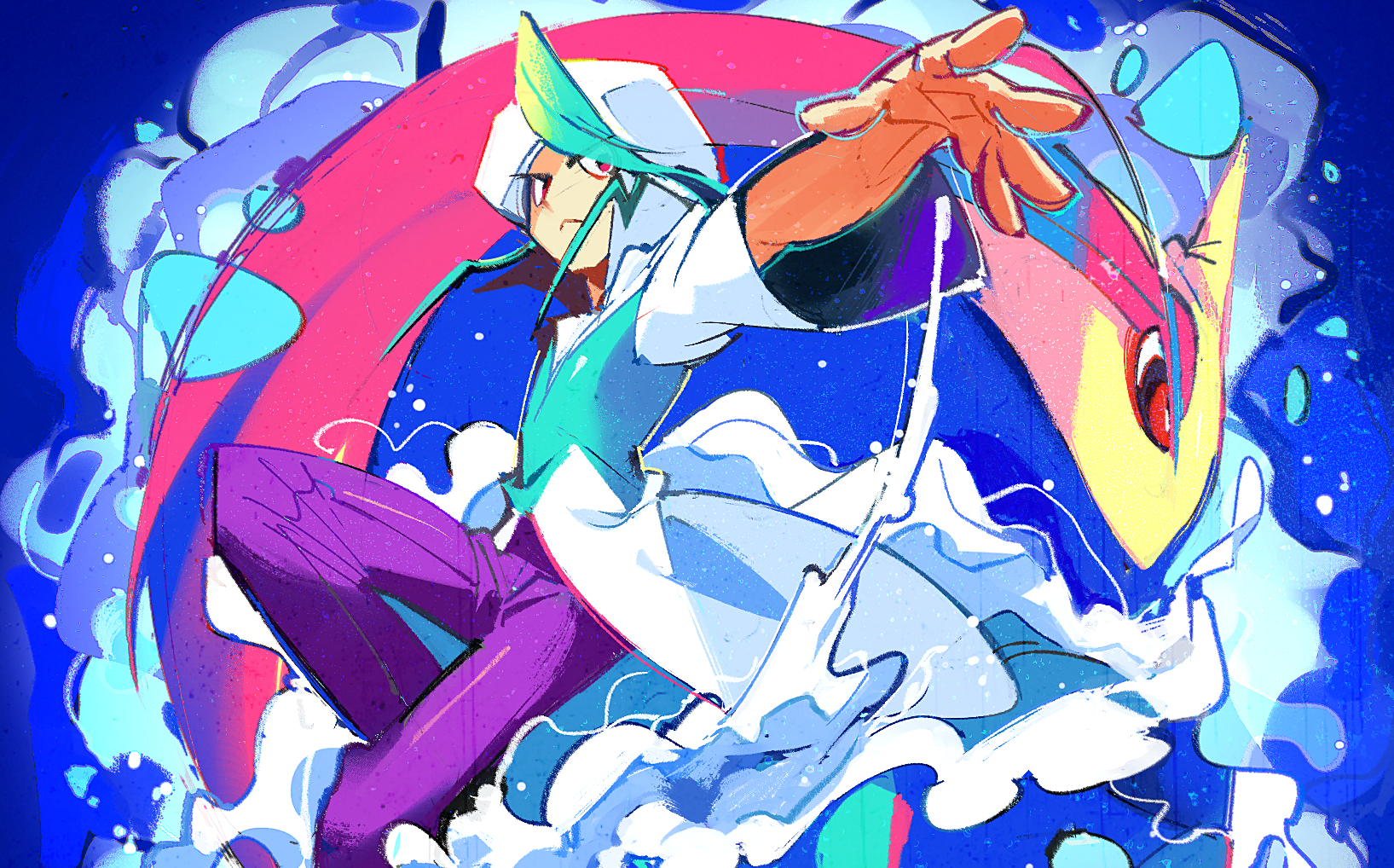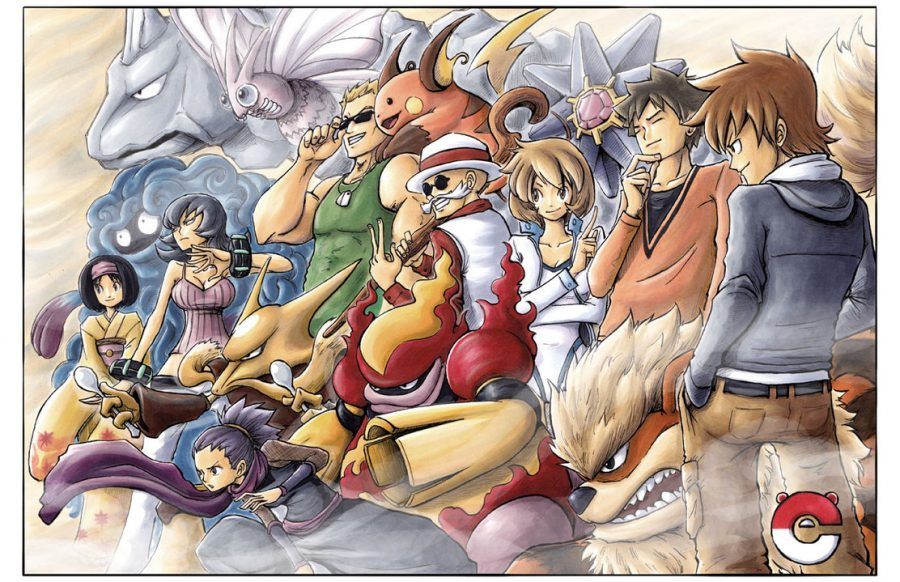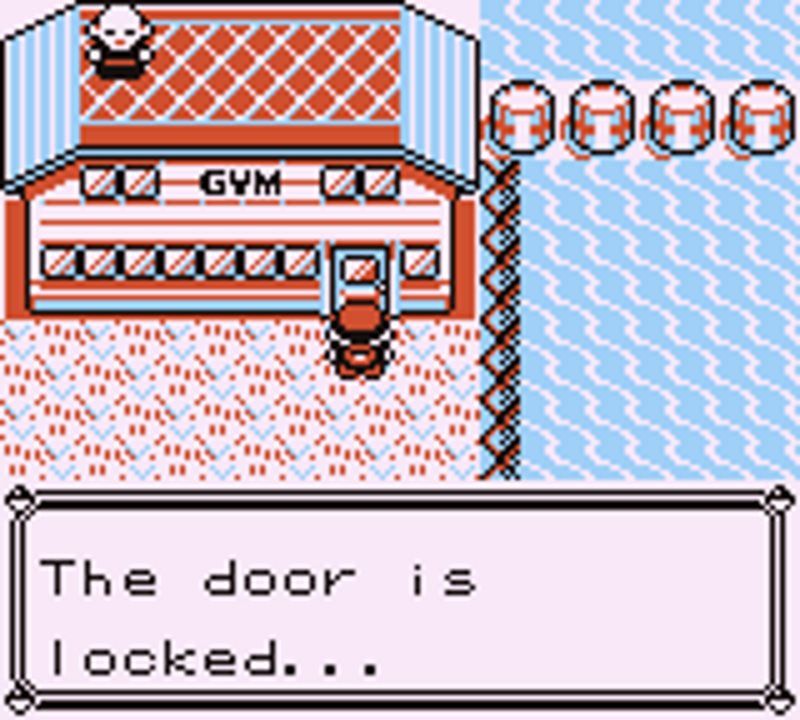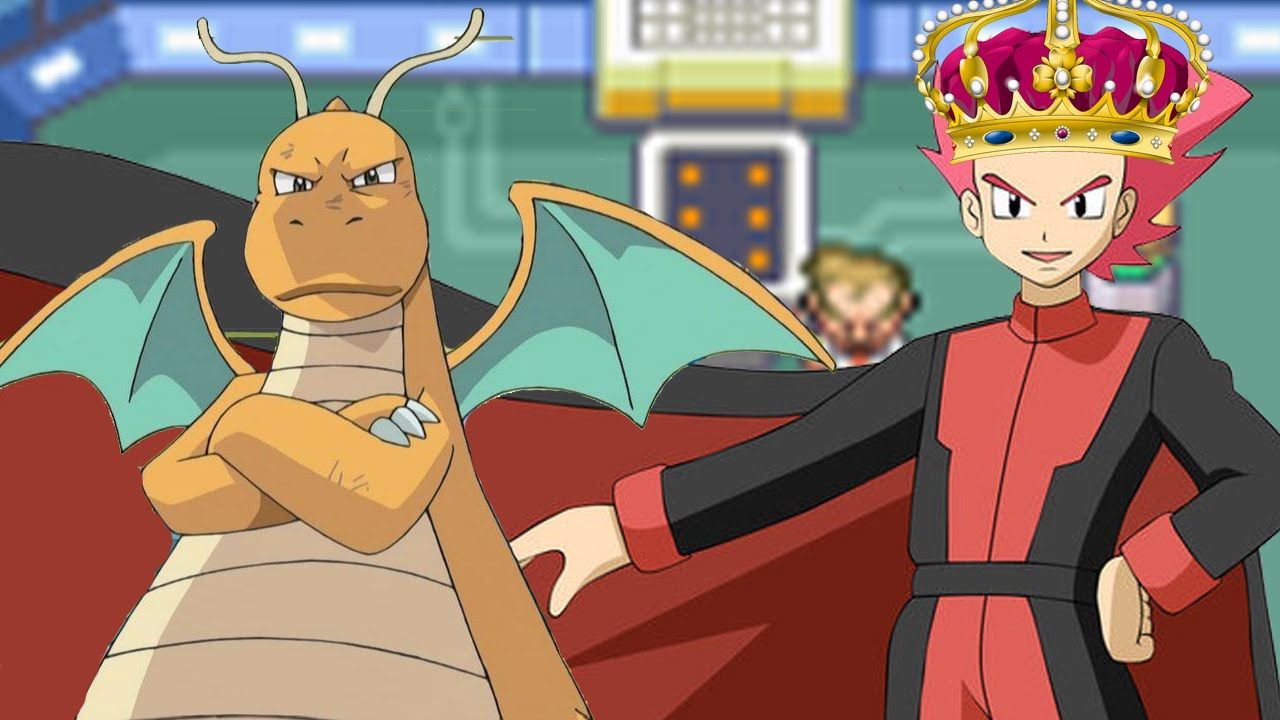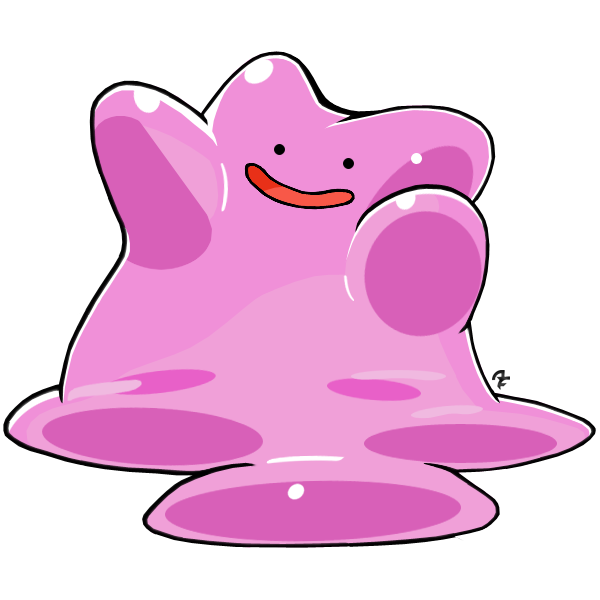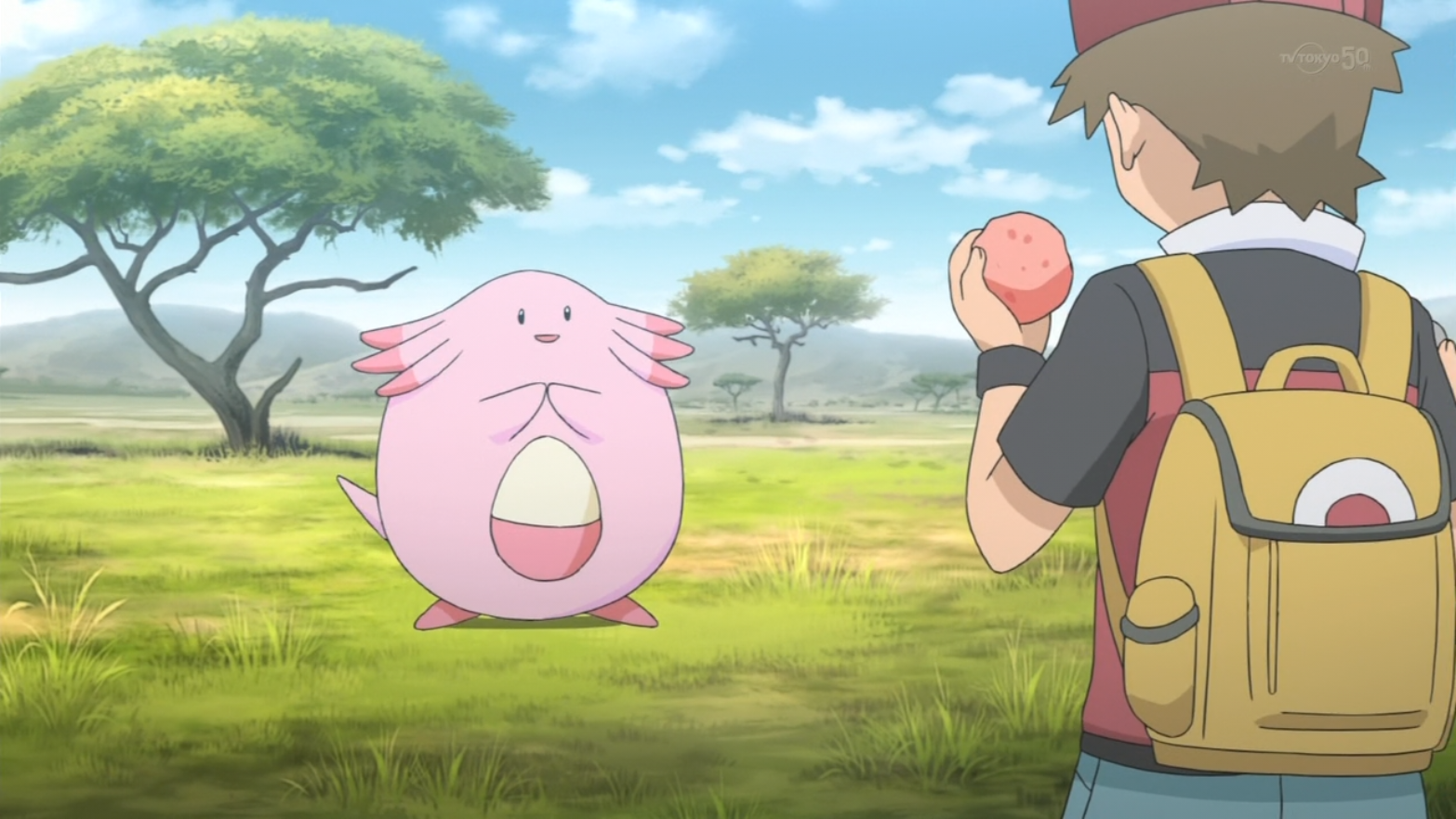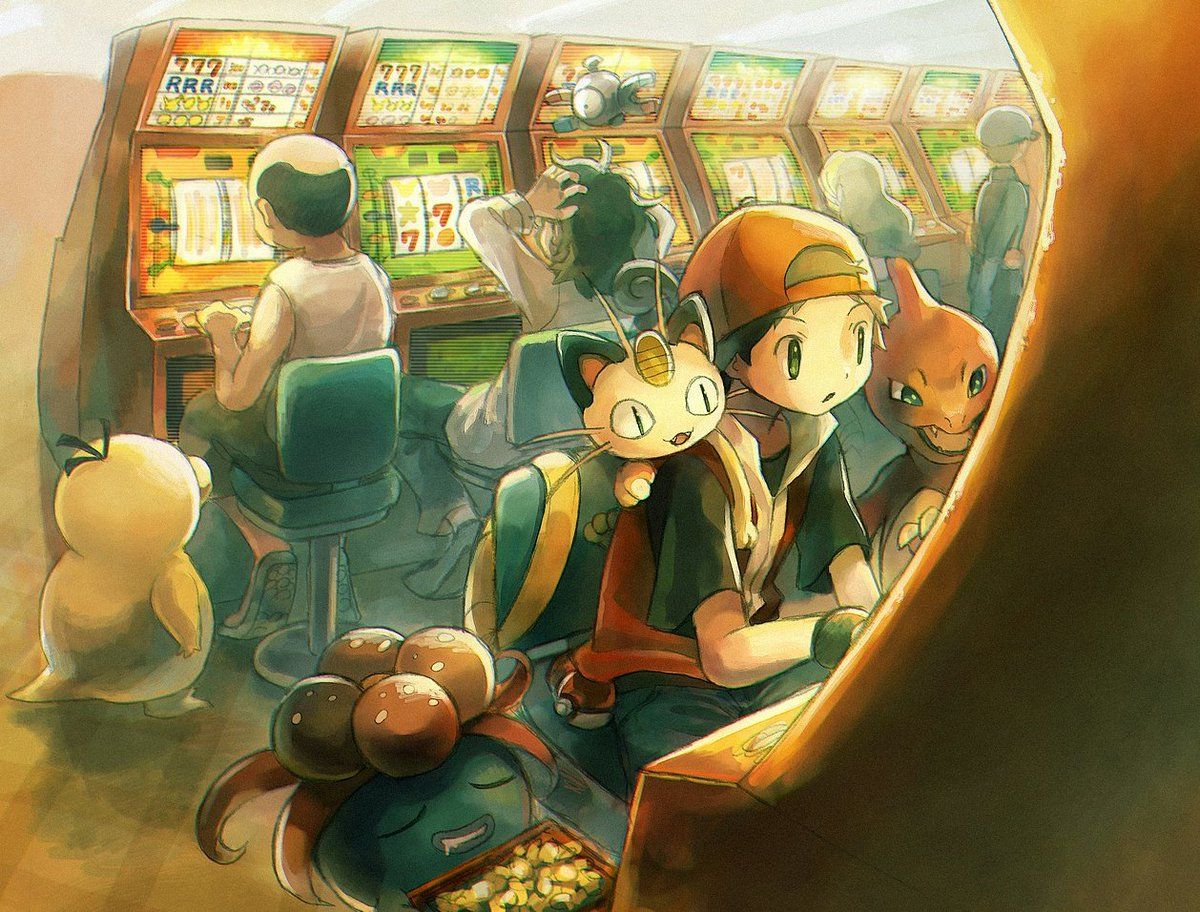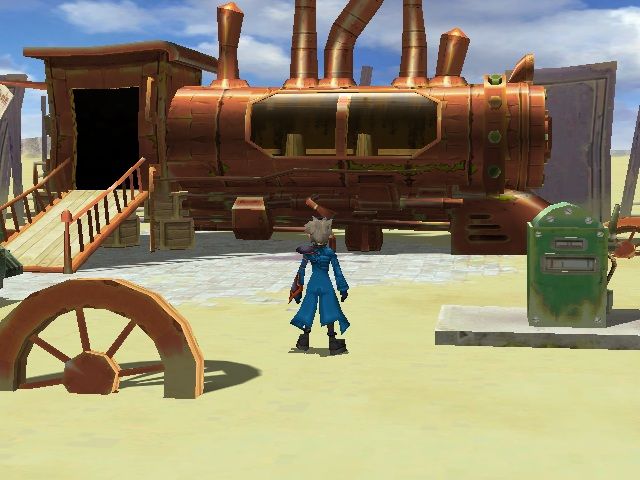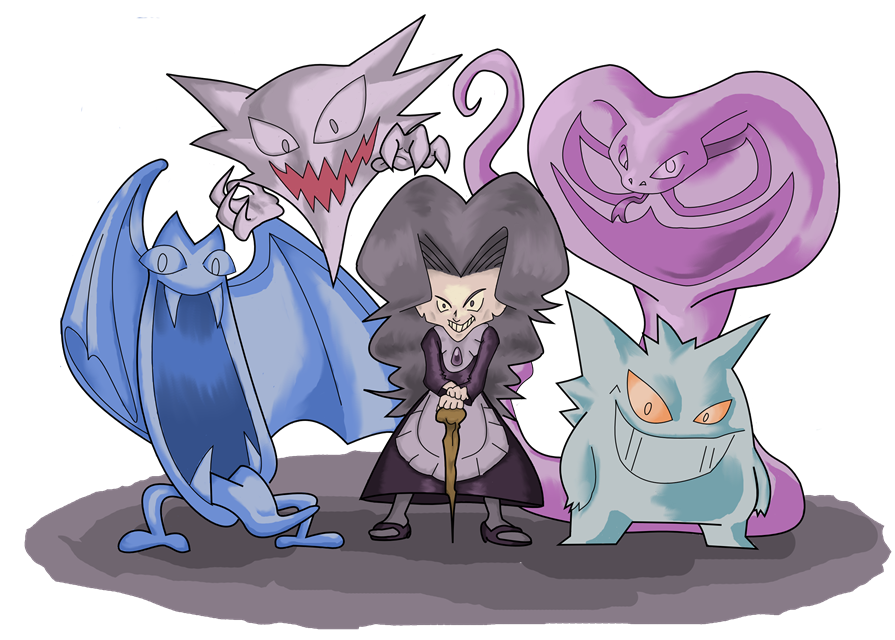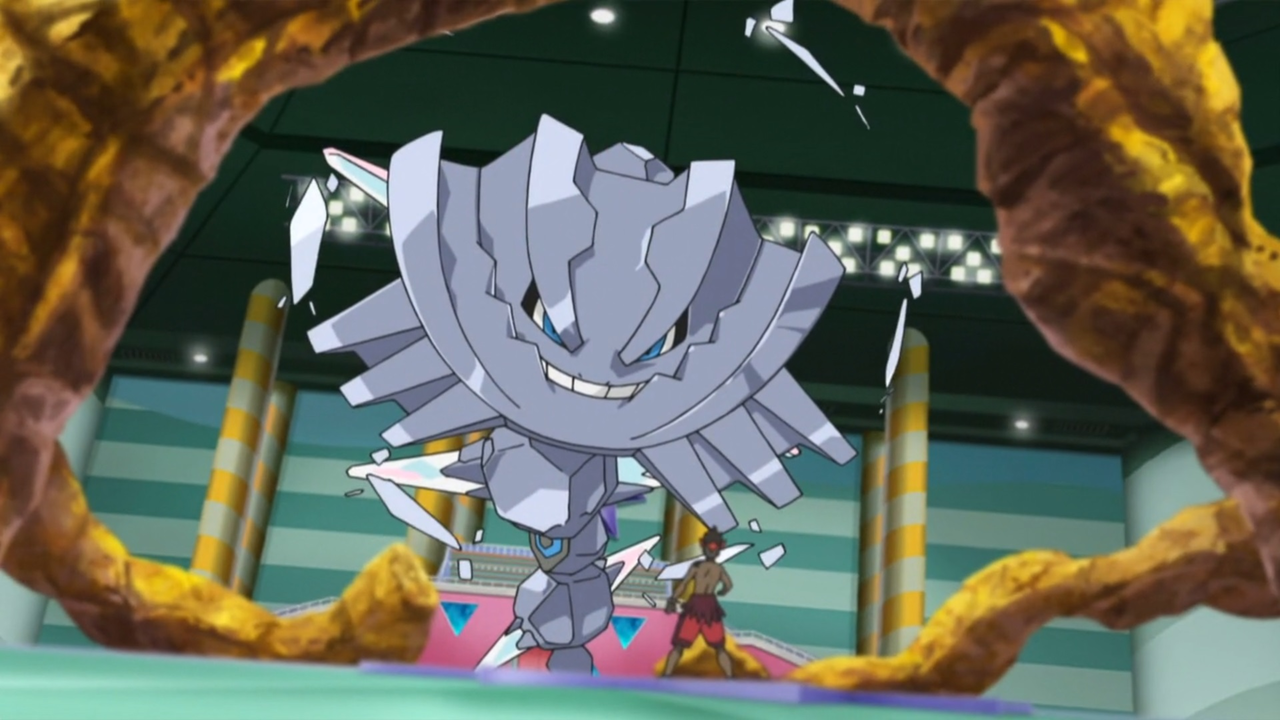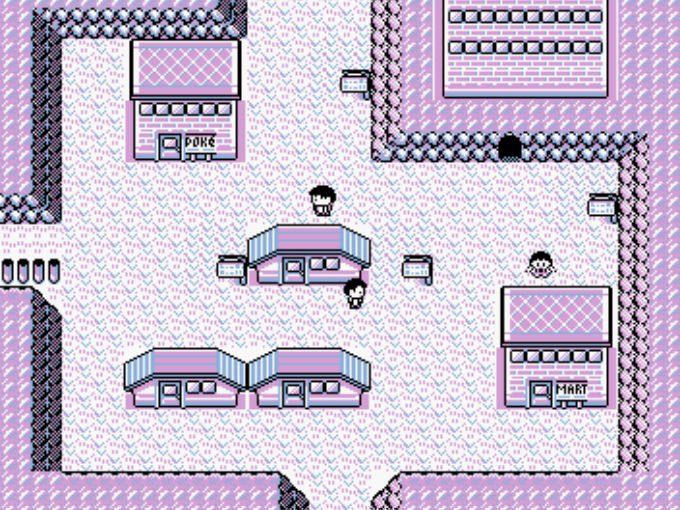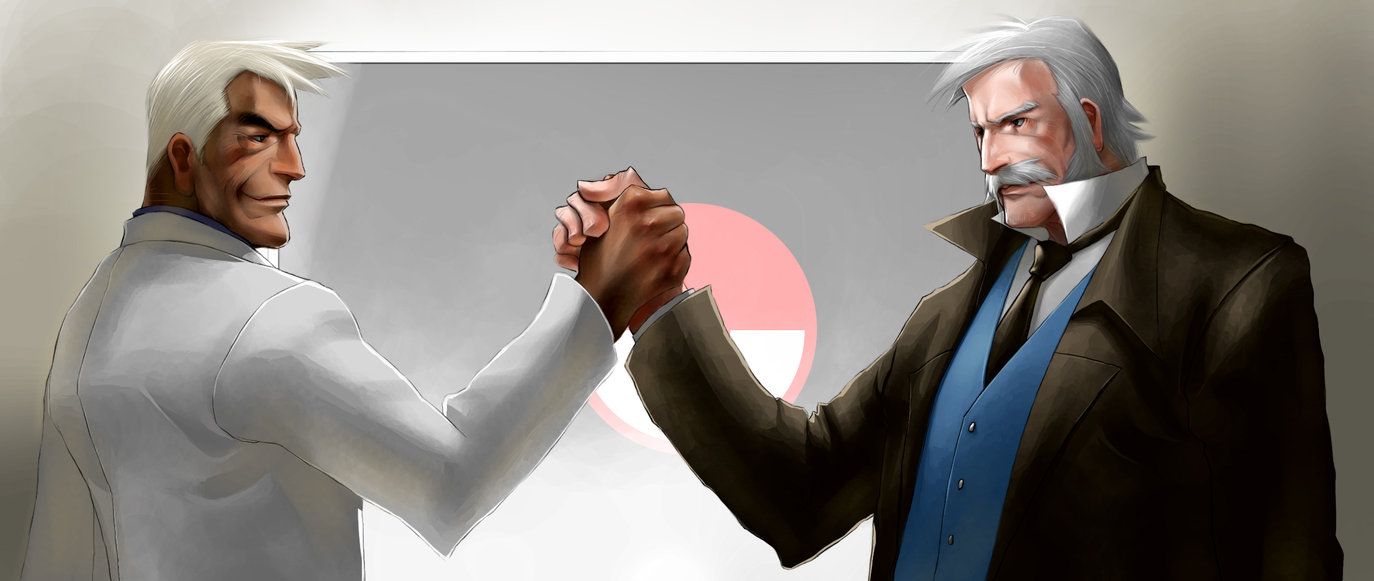Unless you’re a pretty hardcore fan of the series, chances are you don’t really know that the Pokémon franchise has a very deliberate timeline and chronology that even rivals The Legend of Zelda’s at times. Every single game in the series has a place in the Pokémon canon and they all influence one another either in major or minor ways. Some games even take place at the exact same time, and not just in a “spin-off during the main game scenario” either. Whole Generations parallel one another to create a more unified and cohesive world. Of course, not even Game Freak is willing to cover every little detail.
Following the events of Generation I, there is a three-year time skip that ultimately leads into the start of Generation II. For the most part, this time skip exists in a rather unknown plane where just about anything could have happened between Red becoming Champion and Gold beginning his Pokémon journey. This isn’t to say we’re completely in the dark, however. Offhand comments made by NPCs, entire games, and context from Generations can give us an idea of what exactly happened during this time skip and just how important it ultimately was in the grand scheme of the Pokémon universe.
25 The Events Of Ruby And Sapphire
Believe it or not, Generation III takes place at the exact same time as Generation I and even outpaces it by a fair bit. Given how the Gen I remakes in Gen III can trade with the Hoenn based games, we can assume that the two games begin at similar points, but the sheer scope of Gen III’s events means it keeps on trucking after Red becomes Kanto’s Champion.
Between the events of RBY and GSE, Hoenn is being absolutely ransacked by two nefarious organizations while two deities try to destroy the world and a ten-year-old saves the day, goes on to become Hoenn’s Champion, and challenges the Battle Frontier. It really puts the Pokémon world into perspective, doesn’t it?
24 Bill Invented Time Travel
In what reads more like a strange joke with no punchline, Bill, the man who turned himself into a Pokémon by accident in Generation I, invents literal time travel before Generation II starts up. Of course, Pokémon’s version of time travel is a bit different in that it’s a one-way street. By placing Pokémon into the time capsule, Bill can send them back three years.
Someone had to.
Logically, such a concept makes no sense. Red already beat the Elite Four and Gold is exclusively sending Pokémon to Red. As Red has already won, however, and time has moved on, there is no Red for Gold to send Pokémon to. At the same time, Red is receiving these Pokémon and will inevitably challenge the Elite Four and win, resulting in a future where Gold sends him Pokémon… don’t think about it too hard.
23 Blue Resigned As Champion
Blue, Generation I’s rival, has two notable firsts under his belt: he’s the first Champion in the series, as he’s the final boss of the first set of games; and he’s the first Champion to actively resign, becoming a Gym Leader in Generation II. What’s interesting about this fact is that Blue resigns entirely based off of Red’s actions.
In becoming Champion, Red actually ditches the title altogether and goes off to do Arceus knows what for three years. Logic dictates that Blue would regain ownership of his title as he’s already proven himself capable to the Elite Four, but Gen II shows us that he isn’t Champion. This likely means, upon being given his title back, he simply tossed it away as it was no longer earned and Red was no longer around for a rematch.
22 Professor Rowan Mentored Sycamore
In their attempt to create a more unified world, Game Freak continually references past events and characters in new games to widen the scope of the Pokémon universe. One such recent(ish) method was the reveal that Professor Sycamore, Generation VI’s Pokémon Professor, was personally mentored by Professor Rowan.
The professors are closer than you think.
Given Sycamore’s age, how long he’s been a professor in Kalos, and Rowan’s backstory between games, it’s entirely possible Sycamore apprenticed under Rowan during the events of RBY and GSE. Given that Sycamore is rather fresh-faced, he likely finished up his studies under Rowan before becoming a professor himself.
21 Elm Discovered Pichu
Although it may not necessarily be canon anymore given how much the context of breeding has changed since Generation II, Gold and Silver specifically attributed the discovery of Pichu to Professor Elm. It’s a bit hard to believe that an entire civilization could be blind to a Pokémon’s existence, but Elm was, for a time, the first person to see a Pichu.
In a way, it makes sense. Elm is the professor when it comes to breeding in the Pokémon universe. He’s bound to understand it best and it’s entirely plausible that he would be the first to see a Pichu in action in the serie’s pre-Gen III continuity. Given how much the newer games have opened the world, that’s not really a possibility anymore, but it was still Game Freak’s intent for the character.
20 Koga Applied For The Elite Four
At some point after Red defeated the Elite Four, the Kanto-Johto League saw a massive shape up that would render it basically unrecognizable when Gold would later come to challenge Lance three years later. One such change involves Koga, Fuchsia City’s Gym Leader. In his quest for upward mobility, Koga applied for the Elite Four.
Never settle.
What’s particularly interesting about Koga’s role in the Elite Four is how realistic it is. It makes sense that, after years of being a Gym Leader, at least one of them would want to go on to do better things, and being a member of the Elite Four is basically the dream job besides actually being Champion.
19 Wallace Challenged The Hoenn Elite Four And Won
In the same vein as Koga going on to apply for the Elite Four, Hoenn’s eight Gym Leader, Wallace, goes on to challenge the Elite Four, win, and become Hoenn’s Champion. Now, the weird thing about Emerald is that it’s technically the “canon” version of Gen III, but some elements from Ruby and Sapphire do carry over.
Specifically, Steven was still Champion at some point. Rather than Brendan or May going on to challenge him and win, however, Wallace beats them by a few years, taking out Steven himself and letting himself be open to Brendan or May’s inevitable wrath. Like Koga, it’s a nice bit of realism. You wouldn’t be a Gym Leader forever after all.
18 Team Rocket Opened A Johto Chapter
Given that Giovanni was from Kanto, had a legitimate job in Kanto, and seems to have started Team Rocket out of Kanto, it can deduced that Team Rocket, under Giovanni, was specifically a Kanto based organization. Following Giovanni’s defeat, the remnants of Team Rocket banded together to form a Johto chapter.
There's really no stopping Team Rocket.
In a way, it actually makes quite a bit of sense. Johto’s Team Rocket runs a very different MO than Giovanni’s. Where Giovanni was your basic mob boss, Johto Team Rocket seems to have their sights on total regional control. Not that Giovanni didn’t, mind you, but he wasn’t nearly as big picture or actively vindictive.
17 Blue Took Over Giovanni’s Gym
Blue and Giovanni are actually quite interesting foils in Generation I. Where both act as consistent rivals for Red’s adventure, fought multiple times at that, the former is incredibly disrespectful but ultimately heroic whereas the latter is charming but villainous to the bone. It’s interesting, then, that Blue takes over Giovanni’s Gym in the time skip.
It’s rather fitting, honestly, as both enact a sort of self exile upon losing to Red. Where Blue steps down as Champion, refusing his title, Giovanni leaves Kanto entirely, disappearing off the face of the Earth in the process. Blue takes over Giovanni’s Gym, but strips away his legacy, making it his own. There are quite a few layers here.
16 Cinnabar Island Erupted
Cinnabar was easily the smallest location in Generation I so for it to remain the smallest in Generation II was a bit of a given. What wasn’t given, however, was the fate that would befall it in the time skip. In just three short years, Cinnabar Island is entirely washed away- a culture gone. All that remains is a small cave Blaine tends to.
Just one of the series' many dark moments.
What’s particularly saddening about Cinnabar’s eruption is what it means for Kanto on a conceptual level. It is a complete loss of culture. Cinnabar was so unlike any other location in Kanto and it no longer exists. Gone are years of data on Mew, the origin of Ditto, and Kanto’s one tropical region.
15 Red Vanished
Upon defeating Blue and becoming Kanto’s Champion, Red vanishes. While Gold, Silver, and Crystal reveal that he simply left to train on Mount Silver, the concept of a ten year old asserting themselves as the strongest trainer in their country is honestly quite jarring. What did Red’s family think of this matter?
It’s strongly implied that Professor Oak knew where Red was given Generation II’s endgame, but there’s nothing specifically stating that Oak immediately knew what happened to Red. For all we know, Red left to go challenge Mewtwo and then just vanished not unlike Giovanni.
14 Lance Challenged The Elite Four
With Red gallivanting the world and Blue uninterested in continuing his tenure as Champion, the Kanto-Johto League was left, once again, without a Champion. In response to this, Lance sought out the Elite Four, challenged them, and made himself the Champion. Of course, the logistics behind such a scenario is kind of messy.
Does it still count as the Elite Four is you only fight three?
As one of the Elite Four, and the strongest one at that, shouldn’t Lance just inherit the title of Champion? We clearly know this isn’t the case as Blue was the first Kanto Champion, but this means any event where Lance challenges the Elite Four results in him only battling three of its four members. It’s probably best not to think about this too hard; Game Freak didn’t.
13 The Ditto Migration
Ditto’s origin is so specific that its presence in any other reason can only mean one thing: the Dittos migrated after the events of Generation I. Since Generation I is the chronologically the earliest game in the series, Dittos migrating can easily explain why they appear in other regions without contradicting the basically confirmed theory that Dittos were just Mews scientists failed to clone on Cinnabar Island. How they migrated we’ll likely never know, but they’re rather gelatinous in nature so it’s possible they were just washed away by the tides and landed in other regions unharmed.
12 The Safari Zone Closed
Kanto changed quite a lot in just three years, even when considering the remakes. In the original games, it made sense as to why some of Kanto’s content was cut out of universe. There’s only so much data you can fit on a Game Boy cartridge (and Gold and Silver are actually regular GB games,) so some stuff had to naturally go.
Come the Generation IV remakes, however, and Kanto is still missing some content. Most notably, the Safari Zone. In the jump to Heart Gold and Soul Silver, Game Freak decided to honor the fact that Kanto had closed their Safari Zone. Interestingly, this would be one of the last instances of a Safari Zone in the series.
11 Gambling Ages Changed
The remake continuity brought some major changes to the Game Corner. While Red could still gamble in FireRed and LeafGreen, and indeed needed to in order to complete his Pokédex, Gold was completely barred from gambling in Heart Gold and Soul Silver, only being allowed to play Voltorb Flip on account of his age.
Game Corners ain't for kids.
This is actually a change necessitated by age ratings. If a Pokémon game were to include gambling nowadays in the same vein as Generations I through III, it would require a higher ESRB or PEGI rating. Obviously, Pokémon games need to be rated as child friendly as possible so Game Freak had to cut gambling as a result.
10 Colosseum Happens
Given how disconnected the GameCube games are from the franchise, it’s not unusual for fans to completely forget the fact that both Colosseum and XD: Gale of Darkness are games that actually exist. Not only do they actually exist, both are part of the series’ main canon. In fact, Colosseum takes place between RBY and GSC.
This means that, before Gold ever starts his Johto adventure and while Brendan or May are saving Hoenn, Wes is saving Orre from Shadow Pokémon and purifying Lugia so that it may return to Johto, ready to be caught by Gold. Interestingly, if Colosseum’s timeline placement is to be believed, it might imply that there really is only one of each Legendary Pokémon in the world.
9 Agatha Retires
The oldest member of the Kanto-Johto Elite Four, it was really only a matter of time before Agatha retired. With a three year time skip between Generation I and Generation II, it would honestly be silly of Game Freak not to take advantage of her age and transition her out of the league entirely.
On one hand, it would have been neat to see Agatha outlast every other Elite Four member.
Having Agatha retire is an important piece of world building, if a bit taken for granted. Characters do actually age, and they change careers. Agatha is old so, of course, she would retire at some point. Generation I painted her at the end of her career so having her step down in Generation II only makes sense.
8 Steel And Dark Types Migrate To Kanto (Or Do They?)
In both Generation I and its Generation III remakes, there are absolutely no Steel or Dark Type Pokémon in Kanto despite the fact that they very much do exist in the remakes. In canon, the reason Kanto has no Steel or Dark Types before the time skip is because they only migrate over after Red defeats the Elite Four. Or do they?
It honestly seems ridiculous that two entire Types of Pokémon would be missing from a region. It isn’t unusual for certain regions to lack Type variety- Hoenn notably had very few Fire Types- but Steel and Dark Types straight up aren’t around until Gold’s adventure. It seems more plausible that they were indeed in Kanto, but stayed in hiding for whatever reason.
7 Kanto’s Only Graveyard Shuts Down
Lavender Town’s Pokémon Tower is most notably the only graveyard in Kanto. A cemetery for deceased Pokémon, it plays a large role in Red’s adventure, pitting him face to face with his rival, ghosts, and Team Rocket. Come Generation II, though, and the Pokémon Tower has been torn down and replaced with a radio tower.
No rest for the wicked.
While this was absolutely done by Game Freak in an attempt to show how times change, the mere fact that the Pokémon Tower, Kanto’s only mass cemetery for Pokémon, was torn down brings with it some heavy implications. Are those souls still at rest? What of the Ghost Types living there? It seems like an odd change on Game Freak’s part.
6 Professor Rowan Returns Home
Professor Rowan is an interesting character in that we know quite a bit about his life without knowing much about his character. At some point before the start of Generation II and Generation IV, which actually coincide with each other, Rowan is off traveling, only returning to SInnoh some time after Red becomes the Kanto-Johto Champion.
In the event that Professor Rowan mentored Sycamore during this time, it could mean that Sycamore did not come to Sinnoh to train under Rowan and Rowan instead acted as a professor in Kalos. It would make sense to some degree and Rowan centers himself around the study of evolution and Kalos is home to Mega Evolution.


